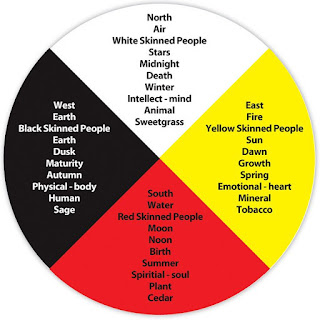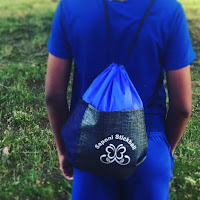We need a holistic approach to Arthritis Care
 In 2016
there was a study with American Indian Elders. I believe that if we
listen to the elders that have this disease, whether they developed it later in
life or as a youth, there are some important takeaways.
In 2016
there was a study with American Indian Elders. I believe that if we
listen to the elders that have this disease, whether they developed it later in
life or as a youth, there are some important takeaways.
American
Indians have the highest prevalence of arthritis of any population in the
United States[i].
Although physical activity is considered a central component of
non-pharmacologic arthritis management [ii],
American Indians are less likely to engage in physical activity than are people
from other racial/ethnic groups[iii]. The
Centers for Disease Control and Prevention (CDC) publishes a list of
recommended evidence-based physical activity programs for arthritis[iv].
However, to our knowledge, no studies have described successful adaptations of
these programs for use among American Indians, or in rural settings, where as
many as 48% of older American Indians reside[v]. These
statistics illustrate the need for culturally tailored physical activity
programs to manage arthritis for American Indians. For evidence-based programs
to be effective, adaptations may be needed to ensure that programs align with
the cultural values of the new target population and context of the new setting[vi].
Understanding lay health beliefs can provide insight into motivations that
underlie individuals’ health behaviors and coping strategies and inform
relevant adaptations to existing programs.[vii] The
purpose of this study was to identify beliefs about health, arthritis, and
physical activity among older American Indians to help select and adapt an
arthritis self-management and physical activity program for a tribe in rural
Oregon.
Existing
evidence-based programs for arthritis should be adapted to address
implementation factors, such as access to transportation, and incorporate
cultural values that emphasize holistic wellness and social interconnections.
Culturally sensitive programs that build on indigenous values and practices to
promote active coping strategies for older American Indians with arthritis are
needed.
Participants
attributed their definitions of health to cultural values taught to them via
their upbringing, traditions, and oral teachings from elders and family
members. Health was a holistic concept that involved the mind, body,
spirit, and caring for others. Living a healthy lifestyle that emphasized all
these dimensions was considered central to health. Most participants described
their upbringing as “healthy” in that they ate native foods (e.g., salmon,
roots, and berries) and participated in cultural activities that were
physically active (e.g., collecting roots and berries, fishing, hiking,
preparing sweat houses, and riding horses). Several participants were concerned
that there was a shift away from community events that promoted social
engagement, creating fewer opportunities for the older adults to engage with
youth and to pass down teachings about health.
Non-pharmaceutical pain management included using heat or ice and rest, and traditional tribal remedies, including making teas from local plants and using sweat lodges and mineral baths. Many participants reported using mental strategies such as distraction and ignoring the pain.
Works
Cited:
[i]
Conte KP, Schure MB, Goins RT. Older American Indians’
Perspectives on Health, Arthritis, and Physical Activity: Implications for
Adapting Evidence-Based Interventions, Oregon, 2013. Prev Chronic Dis
2016;13:160098. DOI: http://dx.doi.org/10.5888/pcd13.160098
[ii]
Conte KP, Schure MB, Goins RT. Older American Indians’
Perspectives on Health, Arthritis, and Physical Activity: Implications for
Adapting Evidence-Based Interventions, Oregon, 2013. Prev Chronic Dis
2016;13:160098. DOI: http://dx.doi.org/10.5888/pcd13.160098
[iii]
Conte KP, Schure MB, Goins RT. Older American Indians’
Perspectives on Health, Arthritis, and Physical Activity: Implications for
Adapting Evidence-Based Interventions, Oregon, 2013. Prev Chronic Dis
2016;13:160098. DOI: http://dx.doi.org/10.5888/pcd13.160098
[iv]
Conte KP, Schure MB, Goins RT. Older American Indians’
Perspectives on Health, Arthritis, and Physical Activity: Implications for
Adapting Evidence-Based Interventions, Oregon, 2013. Prev Chronic Dis
2016;13:160098. DOI: http://dx.doi.org/10.5888/pcd13.160098
[v]
Conte KP, Schure MB, Goins RT. Older American Indians’
Perspectives on Health, Arthritis, and Physical Activity: Implications for
Adapting Evidence-Based Interventions, Oregon, 2013. Prev Chronic Dis
2016;13:160098. DOI: http://dx.doi.org/10.5888/pcd13.160098
[vi]
Conte KP, Schure MB, Goins RT. Older American Indians’
Perspectives on Health, Arthritis, and Physical Activity: Implications for
Adapting Evidence-Based Interventions, Oregon, 2013. Prev Chronic Dis
2016;13:160098. DOI: http://dx.doi.org/10.5888/pcd13.160098
[vii]
Conte KP, Schure MB, Goins RT. Older American Indians’
Perspectives on Health, Arthritis, and Physical Activity: Implications for
Adapting Evidence-Based Interventions, Oregon, 2013. Prev Chronic Dis
2016;13:160098. DOI: http://dx.doi.org/10.5888/pcd13.160098


Comments
Post a Comment